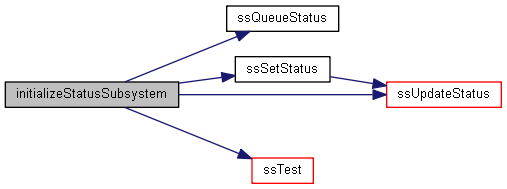 |
ISSDK
1.8
IoT Sensing Software Development Kit
|
 |
ISSDK
1.8
IoT Sensing Software Development Kit
|
Application-specific status subsystem. More...

Go to the source code of this file.
Data Structures | |
| struct | StatusSubsystem |
| StatusSubsystem() provides an object-like interface for communicating status to the user. More... | |
Typedefs | |
| typedef struct StatusSubsystem | StatusSubsystem |
| StatusSubsystem() provides an object-like interface for communicating status to the user. More... | |
Functions | |
| void | initializeStatusSubsystem (StatusSubsystem *pStatus) |
Application-specific status subsystem.
Applications may change how they choose to display status information. The default implementation here uses LEDs on NXP Freedom boards. You may swap out implementations as long as the "Required" methods and states are retained.
Definition in file status.h.
| typedef struct StatusSubsystem StatusSubsystem |
StatusSubsystem() provides an object-like interface for communicating status to the user.
| void initializeStatusSubsystem | ( | StatusSubsystem * | pStatus | ) |
initializeStatusSubsystem() should be called once at startup to initialize the data structure and to put hardware into the proper state for communicating status.
| pStatus | pointer to the status subsystem |
Definition at line 165 of file status.c.
References BOARD_LED_GREEN_GPIO_PIN, BOARD_LED_GREEN_GPIO_PORT, BOARD_LED_RED_GPIO_PIN, BOARD_LED_RED_GPIO_PORT, gpioHandleKSDK::clockName, GREEN_LED, LED_GREEN_INIT, LED_RED_INIT, LOGIC_LED_OFF, OFF, StatusSubsystem::previous, StatusSubsystem::queue, RED_LED, StatusSubsystem::set, ssQueueStatus(), ssSetStatus(), ssTest(), ssUpdateStatus(), StatusSubsystem::test, StatusSubsystem::toggle, and StatusSubsystem::update.
Referenced by main().

